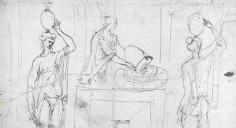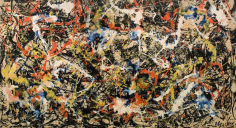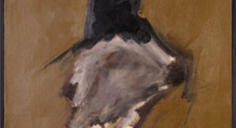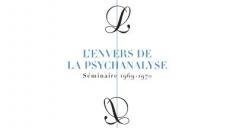- PRÉSENTATION DE L'EPhEP
- L'École
- Les enseignements
- Un Cursus Général, un Cursus Spécialisé
- Le Cursus Général et ses modalités de contrôle
- Le Cursus Spécialisé
- Les Modules de formation Théorique (MTh)
- Le Module de formation Pratique (MP)
- Obligations de volume horaire
- Le Stage Seul
- Le Practicum Seul
- Modalités de contrôle des connaissances du Cursus Spécialisé
- Les enseignants
- Inscriptions
- Politique qualité de l'EPhEP
- Exposé des motifs
- Introduction au travail de l'année
- Livret des Enseignements
- Édito
- Bibliothèque Recherches
- Les dossiers de l'EPhEP
- Cours et conférences : extraits
- Conférences récentes
- Théorie / concepts
- Psychopathologie des névroses
- Psychopathologie des psychoses
- Psychopathologie de l'enfant
- Psychopathologie de l'adolescent
- Questions féminines
- Cognitivisme
- Neurosciences
- Psychothérapie institutionnelle
- Linguistique - signifiant - discours
- Philosophie
- Logique et topologie
- Anthropologie
- Histoire
- Lien social - institutions
- Droit
- Vidéothèque
- Vidéos récentes
- Théorie / concepts
- Psychopathologie des névroses
- Psychopathologie des psychoses
- Psychopathologie de l'enfant
- Psychopathologie de l'adolescent
- Questions féminines
- Cognitivisme
- Neurosciences
- Psychothérapie institutionnelle
- systemie
- Linguistique - signifiant - discours
- Langue - lalangue - la lettre - littérature - arts
- Philosophie
- Anthropologie
- Logique - topologie
- Histoire
- Lien social - Institutions
- Droit
- Parutions
- Dialogues
Agenda
Journées
Actualités
ALI-Bretagne et Collège de Psychiatrie Paris
04/05/2024 - 09:30
Parutions
Claude Landman, Stéphane Thibierge








I love these times to share. When I was reading your titles, I don’t surf over them. I have taken your readings seriously because, for me, your question is the result of a real question, your personal question. For me it’s a mark of respect, taking seriously your question. It’s a real question, a sign that shows what point we are at in the work. We are not all at the same point and it’s always interesting to share.
The first point, it’s a real problem with obsessional neurosis. Melman talks about this problem in the third lesson (Melman Charles, La névrose obsessionnelle, 1987-1988 and 1988-1989), it’s more dense, more difficult maybe. For Lacan seminars, it’s almost always the first lesson, a compact lesson, because he announces the work for one year and after that he develops his work. For this Melman seminar, I guess it’s the third lesson, the most compact with many many threads. There are in this third lesson some threads he will develop in other lessons.
So, I was saying, this first point is a problem that concerns all of us. It concerns our thinking and how our thinking works. Melman says that our thinking works in an obsessional way, so it’s a difficulty. He remembers how Freud, when he writes the other cases, while Dora and Hans are clinical presentations, for the Rat man – I have a little idea I’m going to share with you – he makes a journal and after that a second part with theoretical explanations, theories about the genesis of the neurosis, the mechanisms of defence and all that. It’s the only case with this organisation. And for me, it’s an important learning – when you are studying a case – it could be interesting for you, I impose it on myself, it’s interesting to me, I have learnt from Melman to ask myself the question: why is this case forcing me to work like this, to think like this? What are the effects of this case on me? And Freud gave us an example with this case, The Rat man, of this organisation and this presentation and this order for the first time. It’s not only a presentation it’s a way of thinking. That’s why I was talking about a trap before, because for everyone it’s difficult to get out of the trap of the patient. There’s always a trap, there’s always seduction, always a pleasant moment with the patient. If you stay in this moment, if you work only like this, you can be sure you are going the wrong way, because you are in the trap of your patient’s unconscious. And we are not paid to dance with a patient in his or her trap but to help him or her to get out; otherwise they remain trapped themselves. We have to tell it’s important with an obsessional neurotic to know we are feeding him. But we are not there to feed him. Everyone feeds him. When he’s talking with his wife or friends, everybody, it’s not voluntary, but everybody will feed this thinking work of the obsessional. For me it’s the first point we have to pay attention to.
I said before, telling the truth is not therapeutic. I will say it in another way now: being nice is not therapeutic, being friendly, being cool, being always smiling with patients. What could be therapeutic is the cut, even if we are a little bit rude or rough. We are paid to make a cut, a cut that makes sense, that sometimes creates sense.
Michael was talking before about the signifier and sign. Sometimes we have to cut to open this chain, for this chain to start to move: sending the signifier to another signifier and then to another. That’s why in these courses, the first writings of Lacan are S1…S2 (with a suspension between S1 and S2) it’s because S1 is the first then you have other signifiers. When a patient comes to consult, sometimes there is a knot and your patient is asking for a cut. I love puns in French. It’s a tongue that allows to easily play on words, we have many words we can hear the same way. But in English, or Spanish, it is the same, you have always an equivocation that allows your unconscious to slip, to say something that you didn’t want. I can give you an example. The patient comes with a punctuation, he is always with the same punctuation. You have a man or woman who comes and says ‘I was always forgotten, Daddy and Mammy were always taking care of my brother, my sister’. Ok, it’s a punctuation. This patient is saying ‘this is my life’, like a sign. ‘This is my punctuation’. Your work is to suggest, to open, to hear these other things, the things he can’t. Sometimes it’s only a point, a comma. Sometimes a patient expresses an idea with an exclamation, and you could transform this exclamation to a question and then transference – this confidence or trust relation – will give a value to this new punctuation and the patient could display the transference in another way. The transference makes these different places work. When you go to see your doctor with your wounded arm, if it doesn’t work, you ask a question to your doctor because you don’t know what’s wrong so there’s already a confidence or trust relationship. You say to yourself, ‘he knows, I will do as he says, I will take the pills. I will take your prescription’ (‘ordonnance’, that means order in French). It’s a master discourse, it’s very clear. It’s not an opinion or a suggestion, no, it’s an order, so the patient will say ‘ok I will obey’. Some other patients will say, ‘ok Dr Freud, you are just like me.’
There is a little story with Lacan with an obsessional patient. I was talking earlier about theatre because you have to act a little. It’s a very important word because it means ‘our acts’ too. Lacan had a patient, he was on the couch saying: ‘I have many many problems but don’t listen, they are only bourgeois problems it’s not a real problem. I imagine you have more important things to do than listen to me. It’s only a little problem with my wife. Everybody has these problems. But you have understood everything, so you have not problems like this’. In this case, Lacan sometimes said, ‘My old friend, – if you knew my problems’. Or, he operated in different places. The same patient some weeks later said to Lacan – this idea I was talking about before – ‘Oh I have as many books as you, I have one like this at my house, we are the same you and me’. When it was the end of the session this patient wanted to shake hands with Lacan. Lacan kept his hand in his pocket and said only, ‘see you next week’. This is an example with the same patient, it’s Lacan’s style. I’m not giving you a prescription, it’s only an example of this operation, because psychoanalysis is not a passive work. It’s very active, you can’t sleep. You can’t leave things evolve alone (even if the obsessional wants that).
I will finish this first point here. It’s advertising for all of us: remembering we have to consider how this case is working, how this works in me. This little question will allow me to operate because I am inside the case, I am a part of it. If we don’t consider this, we’ll make many explanations but without effect. It could be very interesting but without effects. For me it is very important to treat a patient and have therapeutic effects. We don’t have to keep a patient about 10 or 15 years for no reason. No. Lacan says in some seminar that the only legitimate demand is therapeutic effects. The patient comes because he has a problem, there’s a knot he can’t knot in another way. Because for the obsessional, it’s not a matter of unknotting: he has to knot in another way to find a solution. Sometimes obsessional patients think they have to undo something, take some steps back or something. I have seen patients with obscene ideas, and they have this idea, ‘when the idea comes into my mind, I have to take two or three steps back and then I continue’. This is a beautiful story but, for the obsessional, you can’t undo or erase the idea. You have to understand this idea another way. So that’s my first point on how to work with this structure.
For the second one, the second point, I will repeat some things you already said – It’s the lack of cut, the effects of this lack of cut – with maybe three points. The first one is an effect of this lack of this cut. It’s this ‘life in between’, in between which erases the otherness. This point could be interesting for us. There are some professors, teachers I have had in the International Lacanian Association (ALI), Melman, Dorgeuille, Jean Bergès (for work with children) or Czermak who used to say ‘when you listen to someone, in the first five minutes you have to know who you have in front of you’. Such a fast diagnosis! Sometimes when I tell this story, everybody says, five mins? That’s not for me, that’s not possible, what if I’m wrong?’ But I’m telling you some points to do this. When you have someone who comes into your bureau and you feel he is trying to erase this difference in your places, you have a first point to consider, a compass because you can’t wait ten years to say maybe now, I’ve found he’s obsessional and now I’m going to start to cut. Sometimes it’s too late and most of all, we’re not paid to wait. We are paid to support, to cut, to obtain some therapeutic effects to make things move. So that’s a first point that’s important for me, this life of the obsessional that I call in-between.
This example of… I guess it was from Karolina before… between two and three 2 ½, like this. Sometimes these patients when they’re asked when were you married, they say ‘it was two or three years ago’. But why two or three? They know the date, it was their marriage. And then, a few minutes later, talking about something else, the patient says ‘two or three weeks ago you told me…’ And you’ll see very often this strategy of obsessional patients to avoid the cut. Second little point: if there is no cut to found the Autre – and it was Ros that reminded us that there is not a cut but a continuity, one just beside the other – there is a problem because the psychoanalyst, the doctor, the teacher, all these authority figures, the Father, your boss, don’t exist anymore. They become a ‘friend’. Even the father, he will be treated like a big brother. Melman says somewhere in the seminar that the boy is waiting, he says, ‘now my father is sleeping with mum, it’ll be my turn next’. Next turn, not a cut, he’s only waiting… the same chain. This second point is very important point for me because if you don’t have a cut, all relations will be changed. All relations will be affected by this lack of cut. This lack of cut produces another problem how or what do you think about repression; what is the quality of repression for the obsessional? Because repression founds our neurotic life. I mean it creates a direction. We are frustrated because we say, all of us, we had an object when I was little and I don’t have it anymore so I have to refind (refind is a word used by Freud but refind means I will find again, I will find something I had, but this Object I never had it). Our neurotic lives work like this. We are searching for this object. Our love, sentimental friendships, all work like this. It is the symbolic value of this object.
So, the third point, this little point. This distance between the Autre and me is not enough to create different places that the Father and the Lady for the Rat man could be others, big ones and little ones. There is a tension, a huge energy to keep a good distance, used by the obsessional neurotic to allow his father to be around, I would say it like this, to be around, not in an authority position but to be around, like a buddy. I don’t know if in Ireland fathers are like this but in France, nowadays, fathers are very cool. Fathers don’t want to cut, they don’t want to be the evil one, they want to be friends, they want to play with children. Why not if you can cut when you have to? There is a social problem I guess working like this maybe ten or fifteen years ago, working in France.
I was talking this morning about divorced couples or families, you have a father who will see his children one weekend twice a month and he will say, ‘I don’t want to cut, I only have two days’, so there will be McDonalds, movies, the swimming pool or something and then to mother’s house. Sometimes I ask them, how is schoolwork for your boy? They don’t know. They are disengaged. I can’t say you have to, but sometimes I ask, do you want to be at this place? Who can be in this place? If you don’t want to be in this place maybe someone else could be, a grandfather or a stepfather. Who could be this operator to cut? Because if we don’t have this operator, you will find angst/anguish. For the psychiatrist it is a very important word. It means a tightness – that’s the etymological sense of angst – if there is no cut, the children will face angst. When you cut, even if the child cries or is a little sad, things will be in order, the child will be at a child place.
I’ll give you some examples from treatment of children because they are very useful for illustration. You look for this moment of cut, bedtime, feeding time, dressing time, autonomy, and you learn many things about how this family functions. They say for bedtime, ‘I don’t want to traumatise my children so I will get into bed with him. When he falls asleep, then I will go to my bed’. So, the child doesn’t know the cut. They go asleep thinking the father or mother is beside them. And sometimes the psychoanalyst point out, look at this, ‘you are doing this, it is your work, take it or leave it’. One week later it is a miracle he’s not wetting the bed, you’ve performed a miracle; I say no you did it, you accepted to make a cut even if your child was crying for two or three days. It’s a little example, but you’ll find the same with food, dressing and other moments. In France you have a self-service canteen at school because they have school in the morning and school in the afternoon until 5’o clock. And many little patients, when I ask, they say they don’t like the canteen and they prefer to eat at home. I say, ‘but your father and mother work, how do you manage that?’ They answer that they pay a woman who cooks for them. So, you are a boss, they are deciding what do they eat (pasta or nuggets every day…) and parents are ok with that because if they say no, children will cry. Where is the cut? So, I think it’s very important to explore with the parents and sometimes with others (grandparents, babysitter…) how this cut occurred for them because otherwise this lack of distance makes the death like a failure, Melman says, because always there is a thread between the father and the son and when the father dies, it’s like a failure. So, it’s important to me to explore this moment around sex and death. The two tracks/rails, the foundations of subjectivity. Everything we are going to repress are things about sex and death. Obsessionals don’t repress very well, so when you make questions about sex or death you will see bad repression, in the sense of incomplete repression.
The last point will be about obsessional subjectivity and differences with hysteria. Some of you spoke about castration, the mother’s castration that the obsessional rejects. We can compare this with hysteria. For hysterical people it’s the father’s castration they will reject. But for the hysteric the repression works, the cut works. It’s like a wound. So, the hysteric organises his or her speaking in this wound. She asks for recognition someone who validates her existence. But the obsessional in his relation with the father will be sinful because there are… some of you said it… there is always love and hate. Sometimes when the father is sick or dead, the obsessional patient will feel his guilt as if he did something to kill his father. I think it was Audrey or maybe Nellie, you spoke about the suture in subjectivity. But this subjectivity is too heavy for the obsessional, because this subjectivity is sinful, it’s not clean. There’s hate, murder and even when it’s symbolic, murder. It’s almost a psychotic problem for the obsessional because he doesn’t know if this murder is real or symbolic, it’s between real and symbolic. So, he will want to mask this subjectivity, erase or mask, and you have many expressions. In French we have an impersonal pronoun ‘on’… it’s not I, you, he, she, they, no, it’s ‘on’, its impersonal. Many obsessional patients will say ‘On’ [we] think it’s grey, or ‘on’ [we] want to travel, or something else… and each time when I hear this, that tries to erase or mask their subjectivity I stop the session, I cut. I ask this patient ‘who wants to, who’s talking, who’s there? Don’t play hide and seek. Stop playing like this. Who’s there? Leave a trace, a footprint.’ Sometimes the same patient comes one week later, and you hear the efforts to say ‘I want, I should, I…’ There is someone that he is trying to control. It’s not spontaneous. That’s why it’s difficult for us. Don’t think you won, don’t think it’s okay, we can’t easily stop this obsessional work.
So, I will want to make one difference more between obsessional and hysteric about sexuality. As you read for the Ratman his discovery of sexuality was excessive, excessive joy, jouissance, very early. He was very young when many times he saw what Fraulein Peter, the governess, hided under the skirt. There was also Madame Hofrat (you can hear rat) and many others. I pay attention when I’m with an obsessional patient, because you have always a moment, like a foundation, a sexuality foundation, a moment with excess of excitation, sexual excitation, sexual excitement. Too much sexual excitement because he saw something, he touched something very young and the obsessional patient will try to repeat, because he loves to repeat. He wants to refind this excitation, to do again, to see again, to have again this moment of joy. On the other side, the hysteric: for the hysteric, its disgust. You have some examples, like Dora, when she discovers sexuality she doesn’t want to repeat this, it’s disgusting. So, the strategy is not the same and it’s a compass for us, a clinical compass. When you look for these first explorations, children’s exploration, even adults, we find what was the foundation moment. And what’s interesting for us, it’s the subjective answer, what she or he did about this moment, about this discovery. Which subjective position, repeat or avoid.
Dermot: You mention there that, is it the obsessional neurotic doesn’t accept, doesn’t want to accept the castration of the mother and that’s different for the hysteric who doesn’t want to accept castration of the father?
Omar: Of the father, I said so. Melman says it’s a good thing with this sexual orientation, it’s a good orientation for the obsessional patient. It’s a male side but the problem is the force of this rejection. If you accept your father has limits, not only limits but has limits, if you accept he’s incomplete you will organise your life with this. You could kill him, symbolic way, you will go… but if you reject this and for the obsessional patient, if you reject mother’s castration, mother’s limits you will stay at this place, this phallic place, imaginary phallus of the mother. Why is this a trap for the boy? If you stay in this mother trap you will be her phallus for ever and you wouldn’t have to make something of, what do you say in English, you have to merit something. In French its beautiful because you can play with this word, merit, it’s like mère, mother, but if you stay in mother’s skirt, if you are the imaginary phallus of this mother you don’t have to work, you don’t have to make an effort, you don’t have to run faster to win, no, even if you’re last, mammy will kiss you, you’ll be the best, she will say, ‘Next time you will win, in my heart you’re the first, so, what’s the problem.’ You have to accept mother’s castration to go outside and meet the others, run, make effort, be in the game. If you stay in this place of imaginary phallus you are off side, you are out of the game. And the game for me is father’s side, it’s a social game (father as a function, not necessarily the genitor but the person who assumes the function). Sometimes I describe this like emigration, I say children have to emigrate from the unconditional of mother, to conditional life, father’s side – but father like a function, I said, like a function because you go out this mother’s area where you didn’t have to merit because you were always her little champion. When you go outside you have to respect the conditions to obtain what you want. You have to play the game respecting the rules.
So, I want to share two little cases. The first is a Ukrainian patient, 22 years old. He’s a young Ratman. Why Ratman? because I want to share only a little point, the same torture point that obsesses him. He’s in France because he was a soldier in Ukraine and he didn’t want to make war, didn’t want to play the game and he left the army and left the country. He talks to me and I see the same story as Ratman, you have the name Captain, lieutenant A, B, everything but the torture is not the same. It’s not Ratman really, it’s a bottle man because when he feels confidence with me he starts talking about a torture method of Russians. He talks to me about a torture with a bottle. He says every Russian police station, every police station in Russia has a big bottle and they force prisoners to sit on a bottle, naked. So, I ask him, ‘did they make you do this?’ ‘No.’ ‘Did you see this?’ ‘No, someone told me.’ Like Ratman, someone told him but you see the same secret as Ratman, because he’s given big importance to this area, anal area: Intrusion, with the same problem that Ratman, this mix of excitation and fear: the two elements. And how to work with him? I try to say what’s going on, what’s important, why this fear, why this excitation. Is it normal? No, and he didn’t tolerate what I said. Because I am sharing with you not a nice case, not a good result case, it’s certainly a boring one. I think the most interesting are our difficult cases. This one was one of them, difficult, because I tried to not to go in the trap and I was very strict with the time, with the respect. He was always talking to me about my clothes. Sometimes he tried to touch, ‘nice pullover, nice.’ Always looking for this friendly relationship. In French we have two levels, you have tu or vous. Vous is the respect way and tu is for family and friends. Many times, even with a translator, in Russian, he tried to say tu to me and every time I stop it. I tried to do well, to show him the limits. The last time I saw him he came to me and told me he didn’t need any more this work. He has no obsession any more. He doesn’t think of this bottle but he’s very, very racist. He says, he can’t come anymore because in this hospital he saw many black people, and they were not well educated. They drink making noises, they sit spreading or something (if you pay attention, you’ll find the footprint of his symptom: drink and sit… the bottle). I think he has displaced this obsession of torture, this no difference of places, with racism to try to organise his world.
Albert: To avoid keep coming back.
Omar: To stop because he decided it was not me, I wasn’t agreed.
Michael: He was trying to say tu in place of vous so trying to put you on the same level with him and this is displaced into, to paraphrase, he can’t come because there are other black people there but is, is that different because, with you he’s trying to put both of you on the same level and here with the black people he’s separating, on a different level.
Omar: Good distance, he has his finger on the cursor, he’s deciding the good distance. I was trying to do this, to show him, I was a professional, I was listening, I was trying to help him and all that, but he preferred to have the control. To keep a good distance, to find the bad object, black people, not only black, Arabian too or, strangers. Strangers, but he is a stranger too. He doesn’t speak French, but they are strangers for him. For me it’s interesting because you have objet a, this object, this alterity, he’s modelling, sort of, alterity. They are black people, they are strangers over there and me here this side, distance, and he’s the master of this distance. He decides.
The last case I will be fast because like this we can talk a little. It’s a child, a boy, ten years old. He’s the oldest brother. There are only two. He has a little sister; he cannot sleep at bed time. He wants to sleep with mum and his father is always travelling, earning money, life. This boy starts to be insolent, rude with his mother, that’s why mother calls to me, you have to do something. It’s very, very difficult. He’s only ten years old and he’s speaking like a thief. ‘I can’t tolerate this.’ So, I ask what does she do at home when he speaks like this. ‘Ah I’m very strict: he goes to his bedroom, he does not get a dessert like the others’, something like this. I start to explore with this boy and he shows me, he’s controlling, he’s deciding many, many things and when his mother puts limits, it doesn’t work. So, I try, I look for his father. What happens when your father is at home? It’s a little different, he rests two or three days and after that he goes travelling. And I discover that the mother doesn’t talk with the father. Sometimes she speaks with her husband, but he doesn’t have time, he arrives at 11 at night, he wants to sleep, he doesn’t want to wake the son to say something. So, the father says to me ‘I can’t, tell me, I have to do something but I can’t, I’m doing my work. And then I found something about money because we have in France – I guess it’s the same thing in Ireland – about ten years, sometimes a little later, we have pocket money. So, I ask how it works, because I have tried bedtime and some other things… I was looking for a tool, everywhere. So, it’s money, let’s talk about money. And then this boy says to me, ‘When I need money I ask from mammy, and I obtain. If I need €5, she will give to me. If I need €10 to go outside with my friends, she will give it to me.’ And what about if you have been insolent?, I ask – and I talk with the mother also – then she starts to say, ‘Ah I understand, next time I will keep the money, he won’t have the money.’ But the behaviour is still the same. And then I found something. I talked to the father who agreed to give the money, to be the one who gives the money. So, we are going outside the mother’s skirt, it’s the father now who decides but not alone. I ask this mother to tell the father when there’s a problem. There’s been trouble in the week? We are creating an alliance. So, we are making a drawing, a different drawing because for this boy there was one team, ‘mother and son’ and another team, the father. With the money as a tool, I draw this in another way. The parents are one team, the boy and his sister, the other team, like a sports team. And then, a miracle: the boy understood, the places are well drawn… we have adults and children, no middle players or something like that. And this boy, I stop sessions because he didn’t need more sessions. Things were in good order, not the moral one but for him, an ethical order, a good place.
I think I will stop here so we can discuss a little.